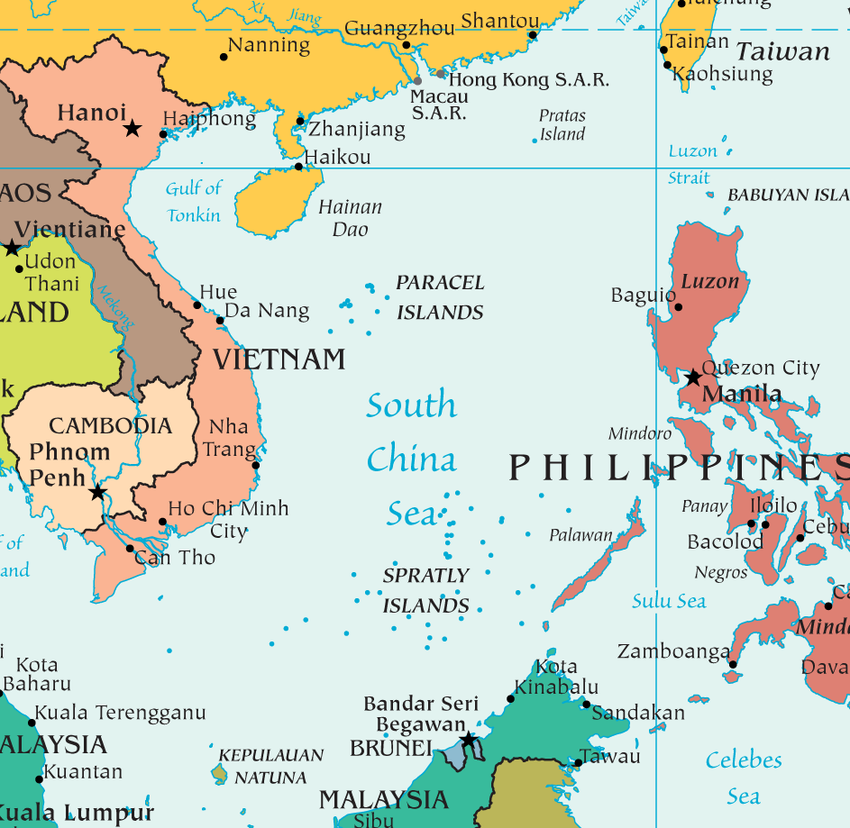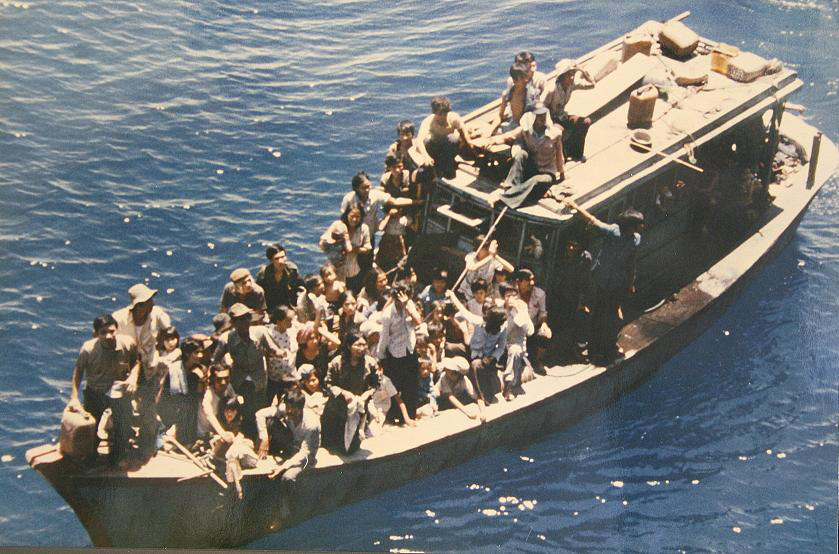Background
Michael James Cassidy was born in Limestone, Maine on July 6, 1959. Mr. Cassidy comes from a family with a long history of military service. Growing up, his father was a member of the Air Force and his family moved constantly. Knowing he could not afford to go to college, Cassidy joined the military in 1976 at the age of seventeen and served for 20 years as a naval technician. Most of his career was spent working an Navy planes. Though he joined the military after US intervention in the Vietnam War had ended, the mass exodus of refugees by boat had just begun. While stationed in the South China Sea, Cassidy worked on several planes that guided refugees toward rescue vessels.
Naval Technician
During his time in the service, Cassidy worked as naval technician. It was his duty to help operate the electronics systems on board including the Magnetic Anomaly Detection (MAD). Cassidy also performed mechanic work on the planes despite the fact that it was not technically his job.
P-3 Orion
The type of plan Cassidy worked on was a P-3 Orion. The model was first introduced in the 60’s and were modified extensively. Mr. Cassidy was qualified to work on all models which was rare. The P-3 Orion is approximately 116 feet in length with a 100 foot wingspan. It is equipped with magnetic anomaly detection (MAD) equipment designed to detect submarines.

Search & Rescue
When Cassidy was first stationed in the South China after completing basic training in 1976, the phenomenon of “boat people,” the term used to describe refugees trying to escape Vietnam by boat, had already begun. Cassidy recalled that occasionally they were called out to help guide refugees towards rescue vessels but that this was something that become more common starting in 1978. It soon became their number one priority.

Cassidy and his crew mates would fly out from bases on the Philippines and conduct searches for boats in the ocean. Cassidy and other crew members would sit for hours peering out a foot and a half wide round window at the South China Sea, the sun glaring in their eyes as they searched for refugee boats. The plane would fly in patterns so they could more thoroughly scour the water. The boats could be difficult to spot. From their position high in the air, the boats looked like no more than little brown dots surrounded by endless blue water. If you blinked, you might miss one.
“We would peer out of this foot, maybe foot and a half wide window for hours. Just hours staring at endless blue ocean, without moving. It got boring real fast but you had to stay alert because if you blinked you might miss something”
-Michael Cassidy
However, it was too dangerous to fly low because the ocean was a hotbed for Thai pirates who liked to shoot at US aircraft. As long as they remained higher up, the bullets were harmless, the crew not even knowing they were hit until they saw the bullet markings later. But if you flew too low the bullets might pierce the glass windows and harm some of the crew. Thus, it was necessary to maintain a higher altitude. When a crew member finally spotted a boat they would fly lower to ascertain the conditions (whether or not people were still alive, if the boat had started to sink, etc.). They would also drop care packages filled with food and medicine to the refugees. Then they would try to locate the nearest vessel and guide them to the boat. These vessels were not always US ships. Often they were cargo holders. Since they could not use radio communication, the planes would try to gain the crew’s attention by flying back and forth over the ship or tilting the plane’s wings in a waving motion. These ships often did not like being commissioned to pick up refugees since deterring from their course cost them money. Occasionally, vessels even refused to follow.
The boats were always overflowing with people. Cassidy described finding a 60-foot boat packed with over 100 people. Many of the people on these boats were people were escaping “re-education”. Those who had held positions in the pre-Communist government were regarded with suspicion and sent to re-education camps, where they were forced to do hard labor. Even when they came back, they had to work harder than others and attend to re-education meeting to prove they were good communists. The Vietnamese government suppressed information about those who escaped on boats to the extent that some did not even know people were doing so until they heard it on secret radio networks. The boats these refugees set adrift in were often no more than dingy fishing boats, not fit to for long sea travel. There was also a high risk that the vessel would drown before being rescued. Rescued refugees were brought to refugee camps, many of them located in Thailand. Often, rescued refugees would stay at the barracks before being relocated to refugee camps. Cassidy and his crew members interacted with them and described them as happy, ready to start a new and better life.
“they were a number of them were in the barracks next to ours. So that’s the only one I knew of. They were treated nicely as far as I know. They were free to come and go”
Michael Cassidy


Sources:
https://www.historymuseum.ca/cmc/exhibitions/cultur/vietnam/vilea03e.html